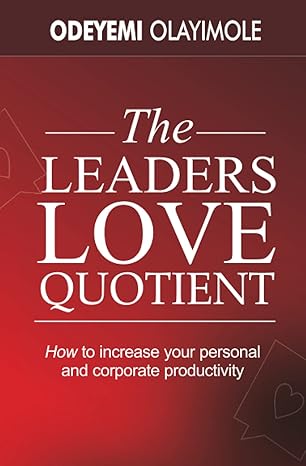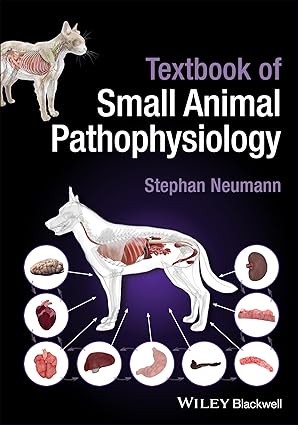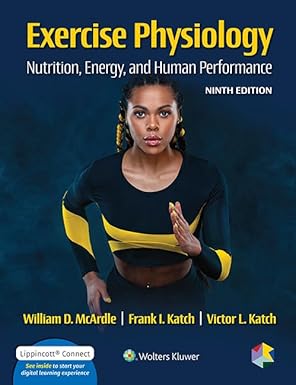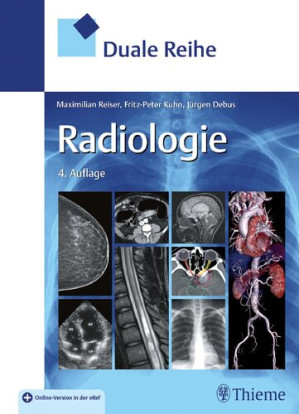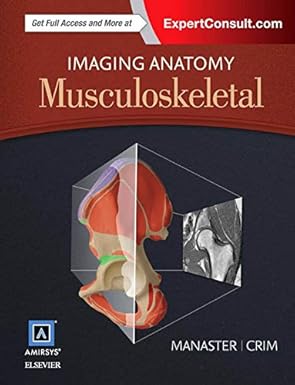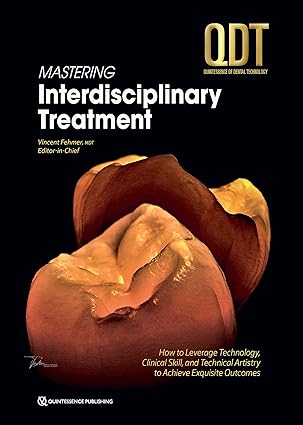to two different five-minute extracts and you will answer six multiple- choice questions for each extract. Reading sub-test The Reading sub-test consists of three parts, with a total of 42 question items. You are given 60 minutes to complete all three parts (15 minutes for Part A and 45 minutes for Part B and Part C). The Reading sub-test has the following structure: Part A – expeditious reading task Part A assesses your ability to locate specific information from four short texts in a quick and efficient manner. The four short texts relate to a single healthcare topic, and you must answer 20 questions in the allocated time period. The 20 questions consist of matching, sentence completion and short answer questions. Part B and Part C – careful reading tasks Part B assesses your ability to identify the detail, gist or purpose of six short texts sourced from the healthcare workplace (100-150 words each). The texts might consist of extracts from policy documents, hospital guidelines, manuals or internal communications, such as email or memos. For each text, there is one three-option multiple-choice question. Part C assesses your ability to identify detailed meaning and opinion in two texts on a topic of interest to healthcare professionals (800 words each). For each text, you must answer eight four-option multiple choice questions.52 fi-fl–��–��� � � � � � � � 1 Extract 2: Questions 13–24 You hear a GP talking to a new patient called Mike Royce. For questions 13–24, complete the notes with a word or short phrase. You now have thirty seconds to look at the notes. Patient Mike Royce New patient transferring from another practice Description of initial symptoms • severe left knee pain in (13) area • worsened after an accident at work • developed (14) on back of knee (described as trigger points.) Impact on daily life • unable to (15) while working (house painter) • problems climbing ladders Initial treatment • exercise programme including – stretching exercises – rest • (16) for pain Developments in condition • GP suspected (17) • prescribed hospital-based rehabilitation • temporary improvement noted Current condition Suggeste That is the e33PRACTICE TEST 1 Part B In this part of the test, there are six short extracts relating to the work of health professionals. For questions 1-6, choose answer (A, B or C) which you think fits best according to the text. 1. If vaccines have been stored incorrectly, A this should be reported. B staff should dispose of them securely. C they should be sent back to the supplier. Manual extract: effective cold chain The cold chain is the system of transporting and storing vaccines within the temperature range of +2°C to +8°C from the place of manufacture to the point of administration. Maintenance of the cold chain is essential for maintaining vaccine potency and, in turn, vaccine effectiveness. Purpose-built vaccine refrigerators (PBVR) are the preferred means of storage for vaccines. Domestic refrigerators are not designed for the special temperature needs of vaccine storage. Despite best practices, cold chain breaches sometimes occur. Do not discard or use any vaccines exposed to temperatures below +2°C or above +8°C without obtaining further advice. Isolate vaccines and contact the state or territory public health bodies for advice on the National Immunisation Program vaccines and the manufacturer for privately purchased vaccines. OPTOMETRY3www.occupationalenglishtest.org Writing sub-test The Writing sub-test consists of one profession specific task based on a typical workplace situation. The writing test takes 45 minutes to complete - 40 minutes to write your letter and 5 minutes at the start to read the case notes on which to base you writing. The Writing sub-test has the following structure: The task is to write a letter, usually a referral letter but sometimes a different type of letter such as a letter of transfer or discharge. Along with the task instructions, you will receive stimulus material (case notes and/or other related documentation) which includes information to use in your response. Speaking sub-test The Speaking sub-test consists of two profession specific role-plays and is delivered individually. It takes around 20 minutes to complete. In each role-play, you take your professional role (for example, as a nurse or as a pharmacist) while the interlocutor plays a patient, a client, or a patient’s relative or carer. For veterinary science, the interlocutor is the owner or carer of the animal. The Speaking sub-test has the following structure: In each Speaking test, your identity and profession are checked by the interlocutor and there is a short warm-up conversation about your professional background. Then the role-plays are introduced one by one and you have 3 minutes to prepare for each. The role-plays take about five minutes each. You receive information for each role-play on a card that you keep while you do the role-play. The card explains the situation and what you are required to do. You may write notes on the card if you want. If you have any questions about the content of the role-play or how a role-play works, you can ask them during the preparation time. The role-plays are based on typical workplace situations and reflect the demands made on a health professional in those situations. The interlocutor follows a script so that the Speaking test structure is similar for each candidate. The interlocutor also has detailed information to use in each role-play. Different role-plays are used for different candidates at the same test administration. © Cambridge Boxhill Language Assessment ROLEPLAYER CARD OET © Cambridge Boxhill Language Assessment CANDIDATE CARD OET Sample role-play NO. 2 OPTOMETRY Suburban Optometry Clinic PATIENT You are 40 years old. You purchased a pair of progressive focus multifocal spectacles from this optometrist and are now having difficulty. You can see well out of each eye, but with both eyes open everything looks a little blurred, distorted and gives you a headache. • Complain to the optometrist that you are not happy with the new spectacles and insist that your money should be refunded. Admit that you do not know anything about these spectacles. • When the optometrist suggests taking further measurements and possibly replacing the lenses, be reluctant to agree, as you feel that a serious mistake has been made. • Insist that you would prefer to have a refund of your money rather than have the lenses replaced. • Be hard to persuade, but eventually accept the optometrist’s offer. Sample role-play NO. 2 OPTOMETRY Sample role-play Suburban Optometry Clinic OPTOMETRIST The patient is 40 years old. You prescribed and sold this patient a pair of progressive focus multifocal spectacles. The patient is having difficulty with them. The patient can see well out of each eye, but with both eyes open there is slight blurring and distortion, which gives the patient a headache. The patient has requested a refund of the money paid for the spectacles. Sample role-play • Find out what the patient knows about progressive lenses. Explain to the patient the nature of progressive lenses. • Try to convince the patient that you can easily fix the problem, but more measurements will be needed and the lenses may need to be replaced. • Convince the patient that the problem is minor and that even one millimetre error in the asymmetric PDs (pupillary distance) or the height can cause some difficulties. • Check that the patient has understood the information. Avoid agreeing to refund any money, but encourage the patient to agree to further testing. 24 February 2018 Ophthalmoscopy: Confirmed disc appearance Visual fields: Confirmed scotoma Goldmann tonometry: R 21mmHg, L 27mmHg at 5.00pm Diagnosis: Probable open angle glaucoma Plan: New bifocal spectacles (D segs) prescribed Refer to ophthalmologist Writing Task: Using the information given in the case notes, write a letter of referral to Dr K Lee, an ophthalmologist at the Eye and Ear Hospital in Newtown. In your answer: • Expand the relevant notes into complete sentences • Do not use note form • Use letter format The body of the letter should be approximately 180–200 words. Patient history: General health: Mrs Bethany Jones, 64 yrs, retired teacher Di�fficulty reading small print with present spectacles Distance vision good No ocular pain No headaches or double vision Good Takes tablets for hypertension (BP) – Tenormin (atenolol) Family history: Father – glaucoma Present prescription: R +3.50/-0.50 x 90, L +3.25/-0.50 x 75 External examination: Vision: Refraction: Near addition: Normal ocular appearance R 6/9, L 6/9+ R +1.25/-0.50 x 90, L +1.00/-0.50 x 90 +2.50 DS New glasses prescribed Visual acuity (corrected): Binocular vision: Colour vision: Visual fields: Slit-lamp: R 6/6-, L 6/6 Phorias – within normal limits, Stereopsis – normal Slight blue loss – LE, using D-15 R normal, L paracentral scotoma – superior to fixation point and nasal step Cornea, iris, lens – normal Van Herick R 0.6, L 0.7 (wide angles) Normal Anterior chamber: Pupils: Fundus: Macula normal, extensive cupping of OD and temp. pallor C/D ratios – R 0.5, L 0.7 IOP (Goldmann tonometry): Raised: R 20mmHg; L 25mmHg at 10.00 am OCCUPATIONAL ENGLISH TEST WRITING SUB-TEST: OPTOMETRY TIME ALLOWED: READING TIME: 5 MINUTES WRITING TIME: 40 MINUTES Read the case notes below and complete the writing task which follows. Notes: Your patient, Mrs Jones, visited your private practice today and, after examination, you decide to refer to an opthalmologist. 18 February 2018 4www.occupationalenglishtest.org How the test is scored You will receive your results in the form of a score on a scale from 0 to 500 for each of the four sub-tests: OET results to August 2018 OET score from September 2018 OET band descriptors IELTS equivalent band score A 500 490 480 470 460 450 Can communicate very fluently and effectively with patients and health professionals using appropriate register, tone and lexis. Shows complete understanding of any kind of written or spoken language. 8.0 - 9.0 B 440 430 420 410 400 390 380 370 360 350 Can communicate effectively with patients and health professionals using appropriate register, tone and lexis, with only occasional inaccuracies and hesitations. Shows good understanding in a range of clinical contexts. 7.0 – 7.5 C+ 340 330 320 310 300 Can maintain the interaction in a relevant healthcare environment despite occasional errors and lapses, and follow standard spoken language normally encountered in his/her field of specialisation. 6.5 C 290 280 270 260 250 240 230 220 210 200 5.5 – 6.0 D 190 180 170 160 150 140 130 120 110 100 Can maintain some interaction and understand straightforward factual information in his/her field of specialisation, but may ask for clarification. Frequent errors, inaccuracies and mis-or overuse of technical language can cause strain in communication. Less than 5.5 E 90 80 70 60 50 40 30 20 10 0 Can manage simple interaction on familiar topics and understand the main point in short, simple messages, provided he/she can ask for clarification. High density of errors and mis- or overuse of technical language can cause significant strain and breakdowns in communication. OET Results table OPTOMETRY5www.occupationalenglishtest.org Test taker’s guide to OET Listening Part A Remember, in Part A you listen to a recording of 2 consultations between a health professional and a patient (dialogue). You take notes while you listen. This part of the test usually lasts around 15 minutes. Before you attempt the Practice Test, consider some important tips below. Do » Use the sub-headings to guide you . » Give specific rather than general information from the recording. Don’t » Jump ahead or back: the gaps follow the sequence of the recording. » Write full sentences: a word or short phrase is sufficient. » Don’t waste valuable time using an eraser to correct a mistake if you make one. Simply cross out any words you don’t want the person marking your paper to accept; this takes a lot less time and you will not be penalised. Part B Remember, in Part B you listen to six recorded extracts from the healthcare workplace. You answer one multiple- choice question for each extract. This part of the test usually lasts around 10 minutes. Do » Read the contextual information for each extract to understand the interaction you will hear. » Read through each question carefully. » Mark your answers on this Question Paper by filling in the circle using a 2B pencil. Don’t » Select your answer until you have heard the whole extract. » Fill in more than one circle on the Question Paper as the scanner will not be able to recognise your answer and you will not receive any marks for that question. Part C Remember, in Part C you listen to 2 recordings of a recorded presentation or interview on a health-related issue. You will answer six multiple-choice questions for each recording while you listen. This part of the test usually lasts around 15 minutes. Before you attempt the Practice Test, consider some important tips below. Do » Read through each question carefully. » Mark your answers on this Question Paper by filling in the circle using a 2B pencil. Don’t » Wait for key words in the question or answer options to be said in the recording. The speaker(s) will often use synonyms of the words you read. » Fill in more than one circle on the Question Paper as the scanner will not be able to recognise your answer and you will not receive any marks for that question.
چکیده فارسی
به دو عصاره پنج دقیقه ای مختلف و به شش سؤال چند گزینه ای برای هر عصاره پاسخ خواهید داد. زیر آزمون Reading زیر آزمون Reading از سه بخش تشکیل شده است که در مجموع 42 سوال دارد. به شما 60 دقیقه فرصت داده می شود تا هر سه قسمت را کامل کنید (15 دقیقه برای قسمت A و 45 دقیقه برای قسمت B و قسمت C). زیرآزمون Reading ساختار زیر را دارد: بخش A – تکلیف خواندن سریع بخش A توانایی شما را در مکان یابی اطلاعات خاص از چهار متن کوتاه به شیوه ای سریع و کارآمد ارزیابی می کند. چهار متن کوتاه مربوط به یک موضوع مراقبت های بهداشتی است و شما باید به 20 سوال در بازه زمانی اختصاص داده شده پاسخ دهید. 20 سوال شامل سوالات تطبیق، تکمیل جمله و پاسخ کوتاه است. قسمت B و بخش C – وظایف خواندن دقیق قسمت B توانایی شما را در شناسایی جزئیات، اصل یا هدف شش متن کوتاه که از محل کار مراقبت های بهداشتی (هر کدام از 100 تا 150 کلمه) تهیه شده است، ارزیابی می کند. متون ممکن است شامل گزیده هایی از اسناد خط مشی، دستورالعمل های بیمارستان، راهنماها یا ارتباطات داخلی، مانند ایمیل یا یادداشت ها باشد. برای هر متن، یک سوال سه گزینه ای چند گزینه ای وجود دارد. بخش C توانایی شما را برای شناسایی معنا و نظر دقیق در دو متن در مورد موضوع مورد علاقه متخصصان مراقبت های بهداشتی (هر کدام 800 کلمه) ارزیابی می کند. برای هر متن، باید به هشت سوال چهار گزینه ای چند گزینه ای پاسخ دهید. به نام مایک رویس. برای سؤالات 13 تا 24، یادداشت ها را با یک کلمه یا عبارت کوتاه کامل کنید. اکنون سی ثانیه فرصت دارید تا به یادداشت ها نگاه کنید. بیمار مایک رویس بیمار جدید در حال انتقال از یک مطب دیگر شرح علائم اولیه • درد شدید زانوی چپ در ناحیه (13) • بدتر شدن پس از تصادف در محل کار • ایجاد (14) در پشت زانو (به عنوان نقاط ماشه ای توصیف می شود.) تاثیر بر زندگی روزمره • ناتوانی (15) در حین کار (نقاش خانه) • مشکلات بالا رفتن از نردبان درمان اولیه • برنامه ورزشی شامل – تمرینات کششی – استراحت • (16) برای درد پیشرفت در وضعیت • مشکوک به پزشک عمومی (17) • توانبخشی مبتنی بر بیمارستان تجویز شده • موقت بهبودی ذکر شد وضعیت فعلی پیشنهاد کنید که تست e33PRACTICE 1 قسمت B است در این بخش از آزمون، شش عصاره کوتاه مربوط به کار متخصصان سلامت وجود دارد. برای سؤالات 1-6، پاسخ (A، B یا C) را انتخاب کنید که فکر می کنید با توجه به متن مناسب تر است. 1. اگر واکسن ها به اشتباه ذخیره شده اند، A این باید گزارش شود. کارکنان B باید آنها را به طور ایمن دفع کنند. ج آنها باید به تامین کننده بازگردانده شوند. عصاره دستی: زنجیر سرد موثر زنجیر سرد سیستم حمل و نگهداری واکسن ها در محدوده دمایی 2+ تا 8+ درجه سانتی گراد از محل تولید تا محل مصرف است. حفظ زنجیره سرد برای حفظ قدرت واکسن و به نوبه خود اثربخشی واکسن ضروری است. یخچالهای واکسن ساختهشده (PBVR) وسیلهای ترجیحی برای نگهداری واکسنها هستند. یخچال های خانگی برای نیازهای دمایی ویژه نگهداری واکسن طراحی نشده اند. علیرغم بهترین شیوه ها، گاهی اوقات شکستن زنجیره سرد رخ می دهد. از دور انداختن یا استفاده از واکسن هایی که در معرض دمای کمتر از 2+ یا بالای 8+ درجه سانتیگراد قرار گرفته اند، بدون مشاوره بیشتر خودداری کنید. واکسن ها را جدا کنید و برای مشاوره در مورد واکسن های برنامه ملی ایمن سازی و سازنده برای واکسن های خریداری شده خصوصی با سازمان های بهداشت عمومی ایالت یا منطقه تماس بگیرید. OPTOMETRY3www.occupationalenglishtet.org آزمون فرعی نوشتن آزمون فرعی Writing شامل یک کار خاص حرفه ای بر اساس یک موقعیت معمولی در محل کار است. تست نوشتن 45 دقیقه طول می کشد تا نامه خود را بنویسید - 40 دقیقه برای نوشتن نامه و 5 دقیقه در شروع برای خواندن یادداشت های موردی که بر اساس آن می نویسید. زیر آزمون Writing ساختار زیر را دارد: وظیفه نوشتن نامه است، معمولاً یک نامه معرفی اما گاهی اوقات نوع دیگری از نامه مانند نامه انتقال یا ترخیص. همراه با دستورالعمل های کار، مواد محرک (یادداشت های پرونده و/یا سایر اسناد مرتبط) را دریافت خواهید کرد که شامل اطلاعاتی برای استفاده در پاسخ شما می شود. آزمون فرعی Speaking زیر آزمون Speaking شامل دو نقش آفرینی حرفه ای است و به صورت جداگانه ارائه می شود. حدود 20 دقیقه طول می کشد تا کامل شود. در هر نقش آفرینی، شما نقش حرفه ای خود را ایفا می کنید (مثلاً به عنوان یک پرستار یا به عنوان یک داروساز) در حالی که مخاطب نقش یک بیمار، یک مشتری، یا یکی از بستگان یا مراقب بیمار را بازی می کند. برای علم دامپزشکی، طرف صحبت مالک یا مراقب حیوان است. زیر آزمون Speaking ساختار زیر را دارد: در هر آزمون Speaking، هویت و حرفه شما توسط همکار بررسی می شود و یک مکالمه گرم کننده کوتاه در مورد سابقه حرفه ای شما وجود دارد. سپس نقش آفرینی ها یکی یکی معرفی می شوند و برای هر کدام 3 دقیقه فرصت دارید. نقش آفرینی ها هر کدام حدود پنج دقیقه طول می کشد. شما اطلاعاتی را برای هر نقش آفرینی در کارتی دریافت می کنید که در حین انجام نقش آفرینی نگه می دارید. کارت وضعیت و کارهایی که باید انجام دهید را توضیح می دهد. در صورت تمایل می توانید روی کارت یادداشت بنویسید. اگر در مورد محتوای نقش آفرینی یا نحوه عملکرد یک نقش آفرینی سوالی دارید، می توانید در زمان آماده سازی آن را بپرسید. نقشآفرینیها بر اساس موقعیتهای معمولی در محل کار است و منعکسکننده خواستههایی است که از یک متخصص بهداشت در آن موقعیتها خواسته میشود. مخاطب یک اسکریپت را دنبال می کند تا ساختار آزمون Speaking برای هر داوطلب مشابه باشد. مخاطب همچنین اطلاعات دقیقی برای استفاده در هر ایفای نقش دارد. نقش آفرینی های متفاوتی برای داوطلبان مختلف در آزمون یکسان استفاده می شود. © Cambridge Boxhill Language Assessment Card ROLEPLAYER OET © Cambridge Boxill Language Assessment CANDIDATE CARD OET نمونه نقش بازی شماره. 2 اپتومتری کلینیک اپتومتری حومه شهر شما 40 ساله هستید. شما یک جفت عینک چند کانونی فوکوس پیشرونده را از این اپتومتریست خریداری کردید و اکنون با مشکل مواجه هستید. شما می توانید از هر چشم به خوبی ببینید، اما با هر دو چشم باز، همه چیز کمی تار، اعوجاج و سردرد به نظر می رسد. • از اپتومتریست شکایت کنید که از عینک جدید راضی نیستید و اصرار کنید که پول شما بازپرداخت شود. اعتراف کنید که از این عینک ها چیزی نمی دانید. • هنگامی که اپتومتریست انجام اندازه گیری های بیشتر و احتمالاً تعویض لنزها را پیشنهاد می کند، تمایلی به موافقت نداشته باشید، زیرا احساس می کنید اشتباه جدی مرتکب شده است. • اصرار کنید که ترجیح می دهید به جای تعویض لنز، پول خود را بازپرداخت کنید. • متقاعد کردن سخت است، اما در نهایت پیشنهاد اپتومتریست را بپذیرید. نمونه نقش بازی NO. 2 اپتومتری نمونه نقش آفرینی کلینیک اپتومتری حومه اپتومتریست بیمار 40 ساله است. شما برای این بیمار یک جفت عینک چند کانونی فوکوس پیشرونده تجویز کردید و فروختید. بیمار با آنها مشکل دارد. بیمار می تواند از هر چشم به خوبی ببیند، اما با هر دو چشم باز، تاری و اعوجاج جزئی ایجاد می شود که باعث سردرد بیمار می شود. بیمار درخواست بازپرداخت پول پرداخت شده برای عینک را کرده است. نمونه بازی نقش • آنچه را که بیمار در مورد لنزهای پیشرونده می داند، بیابید. ماهیت لنزهای پیشرونده را برای بیمار توضیح دهید. • سعی کنید بیمار را متقاعد کنید که می توانید به راحتی مشکل را برطرف کنید، اما اندازه گیری های بیشتری لازم است و ممکن است نیاز به تعویض لنزها باشد. • بیمار را متقاعد کنید که مشکل جزئی است و حتی یک میلی متر خطا در PD های نامتقارن (فاصله مردمک) یا ارتفاع می تواند مشکلاتی ایجاد کند. • بررسی کنید که بیمار اطلاعات را درک کرده باشد. از موافقت با بازپرداخت هر گونه پول خودداری کنید، اما بیمار را تشویق کنید که با آزمایشات بیشتر موافقت کند. 24 فوریه 2018 افتالموسکوپی: ظاهر دیسک تایید شده میدانهای بینایی: اسکوتوم تایید شده تونومتری گلدمن: R 21mmHg، L 27mmHg در ساعت 5.00 بعد از ظهر تشخیص: احتمال گلوکوم با زاویه باز طرح: عینکهای دو کانونی جدید (D segs) برای تجویز مجدد اطلاعات توسط پزشک متخصص در یادداشت های پرونده، یک نامه ارجاع به دکتر کی لی، چشم پزشک در بیمارستان چشم و گوش در نیوتاون بنویسید. در پاسخ خود: • یادداشت های مربوطه را به جملات کامل بسط دهید • از فرم یادداشت استفاده نکنید • از قالب حروف استفاده کنید متن نامه باید تقریباً 180-200 کلمه باشد. سابقه بیمار: سلامت عمومی: خانم بتانی جونز، 64 ساله، معلم بازنشسته، مشکل در خواندن حروف کوچک با عینک حاضر. : پدر – گلوکوم نسخه فعلی: R +3.50/-0.50 x 90، L +3.25/-0.50 x 75 معاینه خارجی: بینایی: انکسار: نزدیک به اضافه: ظاهر طبیعی چشم R 6/9، L 6/9+ R +1.25 /-0.50 x 90، L +1.00/-0.50 x 90 +2.50 DS عینک جدید تجویز شده دقت بینایی (تصحیح): دید دوچشمی: دید رنگی: میدان های بینایی: لامپ شکاف: R 6/6-، L 6/6 Phorias – در محدوده نرمال، Stereopsis – طبیعی از دست دادن آبی خفیف – LE، با استفاده از D-15 R نرمال، L اسکوتوم پاراسنترال – برتر از نقطه تثبیت و مرحله بینی قرنیه، عنبیه، لنز – نرمال Van Herick R 0.6، L 0.7 (زوایای باز) محفظه قدامی طبیعی: مردمک ها: فوندوس: ماکولا طبیعی، حجامت گسترده OD و دما. نسبت رنگ پریدگی C/D - R 0.5، L 0.7 IOP (تونومتری گلدمن): افزایش یافته: R 20mmHg. L 25mmHg در ساعت 10.00 صبح زیرآزمون نوشتن تست انگلیسی شغلی: زمان مجاز بینایی سنجی: زمان خواندن: 5 دقیقه زمان نوشتن: 40 دقیقه یادداشت های مورد زیر را بخوانید و کار نوشتاری زیر را کامل کنید. نکات: بیمار شما خانم جونز امروز به مطب خصوصی شما مراجعه کرد و پس از معاینه تصمیم گرفتید به چشم پزشک مراجعه کنید. 18 فوریه 2018 4www.occupationalenglishtet.org نحوه نمره گذاری آزمون نتایج خود را در قالب یک نمره در مقیاس 0 تا 500 برای هر یک از چهار آزمون فرعی دریافت خواهید کرد: نتایج OET تا اوت 2018 نمره OET از سپتامبر 2018 توصیفگرهای باند OET امتیاز باند معادل آیلتس A 500 490 480 470 460 450 میتواند با استفاده از ثبات، لحن و واژگان مناسب با بیماران و متخصصان بهداشت ارتباط بسیار روان و مؤثر برقرار کند. درک کامل از هر نوع زبان نوشتاری یا گفتاری را نشان می دهد. 8.0 - 9.0 B 440 430 420 410 400 390 380 370 360 350 می تواند با استفاده از ثبت، لحن و واژگان مناسب با بیماران و متخصصان بهداشت ارتباط مؤثری برقرار کند، تنها با عدم دقت و تردیدهای گاه و بیگاه. درک خوبی را در طیف وسیعی از زمینه های بالینی نشان می دهد. 7.0 – 7.5 C+ 340 330 320 310 300 می تواند تعامل را در یک محیط مراقبت های بهداشتی مرتبط با وجود خطاها و خطاهای گاه به گاه حفظ کند و از زبان گفتاری استانداردی که معمولاً در زمینه تخصصی خود با آن مواجه می شود پیروی کند. 6.5 C 290 280 270 260 250 240 230 220 210 200 5.5 – 6.0 D 190 180 170 160 150 140 130 120 110 می تواند اطلاعات خود را مستقیماً بپرسد اما می تواند 100 حقیقت را بخواهد. برای شفاف سازی خطاهای مکرر، عدم دقت و استفاده نادرست یا بیش از حد از زبان فنی می تواند باعث ایجاد فشار در ارتباطات شود. کمتر از 5.5 E 90 80 70 60 50 40 30 20 10 0 می تواند تعامل ساده در مورد موضوعات آشنا را مدیریت کند و نکته اصلی را در پیام های کوتاه و ساده درک کند، مشروط بر اینکه بتواند توضیح بخواهد. تراکم بالای خطاها و استفاده نادرست یا بیش از حد از زبان فنی می تواند باعث فشار و اختلال قابل توجهی در ارتباطات شود. جدول نتایج OET OPTOMETRY5www.occupationalenglishtet.org راهنمای آزمون گیرندگان برای گوش دادن OET قسمت A به یاد داشته باشید، در قسمت A به ضبط 2 مشاوره بین یک متخصص بهداشت و یک بیمار (گفتگو) گوش می دهید. هنگام گوش دادن یادداشت برداری می کنید. این بخش از آزمون معمولاً حدود 15 دقیقه طول می کشد. قبل از امتحان تمرینی، نکات مهم زیر را در نظر بگیرید. انجام دهید » از عناوین فرعی برای راهنمایی استفاده کنید. » اطلاعات خاص و نه کلی را از ضبط ارائه دهید. به جلو یا عقب نپرید: شکاف ها از ترتیب ضبط پیروی می کنند. » جملات کامل بنویسید: یک کلمه یا عبارت کوتاه کافی است. » وقت ارزشمند خود را با استفاده از پاک کن برای تصحیح اشتباهی که مرتکب شدید، تلف نکنید. به سادگی هر کلمه ای را که نمی خواهید شخصی که مقاله شما را علامت گذاری می کند بپذیرد خط بکشید. این کار زمان بسیار کمتری می برد و جریمه نمی شوید. بخش B به یاد داشته باشید، در بخش B شما به شش عصاره ضبط شده از محل کار مراقبت های بهداشتی گوش می دهید. شما برای هر عصاره به یک سوال چند گزینه ای پاسخ می دهید. این بخش از آزمون معمولاً حدود 10 دقیقه طول می کشد. انجام » برای درک تعاملی که خواهید شنید، اطلاعات متنی را برای هر عصاره بخوانید. » هر سوال را با دقت بخوانید. » با پر کردن دایره با استفاده از یک مداد 2B، پاسخ های خود را در این برگه سؤال علامت گذاری کنید. تا زمانی که کل عصاره را نشنیده اید، پاسخ خود را انتخاب نکنید. » بیش از یک دایره را در برگه سؤال پر کنید زیرا اسکنر نمی تواند پاسخ شما را تشخیص دهد و هیچ نمره ای برای آن سؤال دریافت نمی کنید. قسمت C به یاد داشته باشید، در قسمت C شما به 2 ضبط ضبط شده ارائه یا مصاحبه در مورد یک موضوع مرتبط با سلامت گوش می دهید. در حین گوش دادن به شش سوال چند گزینه ای برای هر ضبط پاسخ خواهید داد. این بخش از آزمون معمولاً حدود 15 دقیقه طول می کشد. قبل از امتحان تمرینی، نکات مهم زیر را در نظر بگیرید. انجام دهید » هر سوال را با دقت بخوانید. » با پر کردن دایره با استفاده از یک مداد 2B، پاسخ های خود را در این برگه سؤال علامت گذاری کنید. منتظر نمانید تا کلمات کلیدی در گزینه های سوال یا پاسخ در ضبط گفته شود. گوینده (ها) اغلب از مترادف کلماتی که می خوانید استفاده می کنند. » بیش از یک دایره را در برگه سؤال پر کنید زیرا اسکنر نمی تواند پاسخ شما را تشخیص دهد و هیچ نمره ای برای آن سؤال دریافت نمی کنید.
ادامه ...
بستن ...
This work is copyright. Apart from any use permitted under the Copyright Act 1968,
no part may be reproduced by any process without prior written permission from
Cambridge Boxhill Language Assessment.
For information in regards to OET visit the OET website:
www.occupationalenglishtest.org
First edition published May 2018
© Copyright Cambridge Boxhill Language Assessment.
OPTOMETRYvwww.occupationalenglishtest.org
An Overview of OET 1
How the test is scored 4
Test taker’s guide to OET 5
Listening 5
Reading 7
Writing 10
Speaking 11
PRACTICE TEST ONE 13
Listening (Parts A, B and C) 15
Reading (Parts A, B and C) 25
Writing 47
Speaking 54
Answer keys: Listening (Parts A, B and C) 57
Listening (Audio script) 60
Reading (Parts A, B and C) 70
Writing sample response 74
PRACTICE TEST TWO 75
Listening (Parts A, B and C) 77
Reading (Parts A, B and C) 88
Writing 111
Speaking 118
Answer keys: Listening (Parts A, B and C) 121
Listening (Audio script) 124
Reading (Parts A, B and C) 135
Writing sample response 139
Contents
ادامه ...
بستن ...

